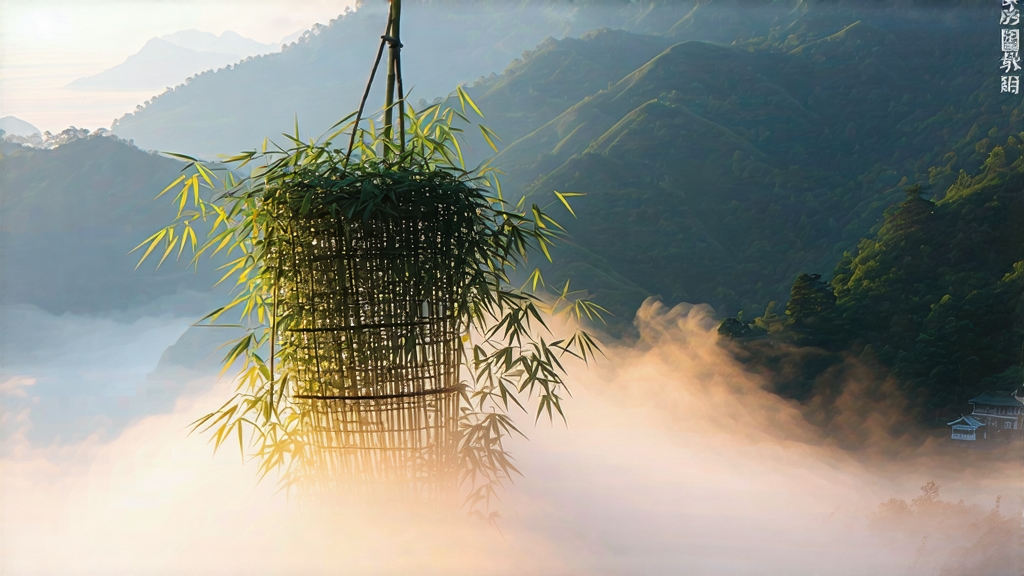
Meng Ding Huang Ya, literally “the yellow bud from Meng Ding,” is the least exported yet most aristocratic of China’s six tea families. While green tea commands the world’s attention and pu-erh fills investment portfolios, this luminous yellow leaf remains a guarded secret of Sichuan’s cloud-veiled peaks. To understand it is to step into a corridor of Tang-dynasty court records, Song-era poetry, and Ming-era imperial edicts, all agreeing on one point: the first spring sprout plucked on Meng Ding mountain was reserved for the emperor’s lips.
History: from celestial tribute to near extinction
The mythic clock starts in 53 BCE, when the Daoist monk Wu Lizhen planted seven tea bushes on the summit of Meng Ding, a ridge lifted 1,450 m above the Chengdu plain. By Tang times (618-907 CE) those bushes—still alive today, crowned as “the seven immortal plants”—were yielding buds so pale they looked gilt in dawn light. An edict of 724 CE ordered the entire crop rushed to Chang’an along post-horse relay stations whose changing bells gave the tea its nickname, “the bell-racing tribute.” Song emperors doubled the annual levy; Ming Taizu (r. 1368-1398) exempted Sichuan from land tax in exchange for 400 catties of the bud. Yet the very monopoly that elevated Meng Ding Huang Ya also doomed it. When the Qing court shifted fashion to fragrant green teas in the 18th century, the yellow technique—laborious, secretive—was abandoned by farmers who could no longer sell their harvest. Only a single monastery on the northern cliff kept one bamboo-bound manuscript describing the “sealed yellowing” step. In 1959, a government restoration team rediscovered the text, convinced an aging monk to demonstrate the process, and re-established a 2-mu experimental garden. Today fewer than 3,000 kg of authentic Meng Ding Huang Ya reach market each spring, most allocated to state banquets or discreetly gifted to foreign dignitaries.
Micro-terroir: where clouds polish the leaf
Meng Ding mountain is actually a fist of granite thrust through the red sandstone of the Sichuan basin. Its northern face catches the tail of the Tibetan Plateau’s monsoon, creating 280 foggy days per year. The mist acts as a natural shade cloth, increasing chlorophyll-b and amino acids while suppressing tannic bitterness. Night temperatures drop 10 °C within three hours, shocking the bush into producing more aromatic precursors. Soil is a thin, acidic brown loam only 28 cm deep, forcing roots to mine minerals from fissured quartz. The result is a bud so tender it can be pierced by a fingernail, yet so laden with L-theanine that it tastes like warm milk before any processing begins.
Plucking: the lunar calendar written on two leaves
Authentic Meng Ding Huang Ya is picked between the 15th day of the second lunar month and the 5th day of the third—roughly March 20 to April 15—when the morning dew weighs exactly 0.4 g per bud, the weight the Qing court called “one tear.” Only the spear-shaped tip plus the first unfolding leaf are taken; the second leaf is left to feed the bush. Pickers, always women between 18 and 35 years old for the dexterity of their wrists, wear bamboo hats lined with wet cotton to keep the buds cool. A full day’s haul is less than 500 g fresh weight, which shrinks to 80 g after the yellowing ordeal.
Craft: the four sleeps of a golden phoenix
The processing is choreographed around four successive “sleeps,” each a controlled enzymatic fever dream.
-
Sha-qing (kill-green) – but only just
Buds are tossed for 45 seconds in a wok heated to 140 °C, enough to rupture peripheral cell walls yet leave core enzymes alive. The leaf temperature must never exceed 80 °C internally; masters listen for a faint “rice-cracking” sound that signals moisture evacuating the midrib. -
Re-shaping while warm
Immediately the leaves are rolled into tight spirals on a bamboo tray lined with white silk. Pressure is applied by the heel of the palm in clockwise circles—always 36 rotations, a number borrowed from the Daoist 36 celestial lords. The goal is not juice expression but micro-creasing, creating hairline fractures through which oxygen will later diffuse.